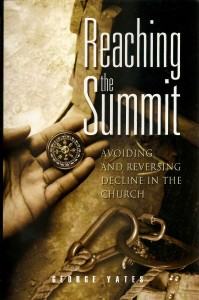Many pastors and church leaders will not give articles or books on organizational health more than a quick glance. The main reason is a great misunderstanding between organizational health and the health of an organization. Terms such as “church health” and “church growth” have been thrown around in various forms for decades. Most church leaders have attended multiple conferences and read books on church health and we have acted on some of what we have read and heard. After all we do have organization in our churches, therefore our difficulty cannot be in the area of organizational health, can it? Hence the misunderstanding between the two terms organization health and the health of the organization.
The health of any organization is vital to the success of the organization. However, the level of organizational health will determine the health of the organization. Let’s go back to an illustration used in the previous post, the human body. The head is the control center for the entire body. Though a head cold is confined to one part of the body, the entire body is affected. You may have the best physically conditioned body in the workplace, yet a head cold will affect the workings and overall output of your body. You may be able to function at 80, 90, or 95 percent of your normal capacity, but reality is you are not functioning at the level you would with a clear head.
The same is true within the church. The control center for the body, the leadership of the church, must be virus free, clear, and cohesive, working as an interdependent team. While the leadership of a church may be considered a team, many do not operate as such. The staff or leadership of many churches may come together regularly for “staff meetings” under the guise of a team, when in reality they function in solitude of each other. Often church leaders serve more in tolerance of each other than in effectiveness as a team.
A true cohesive team will serve together; each member as concerned for the ministries of other team members as his own ministry. We must serve to the point of vulnerability that my ministry may need to take second place to another ministry for a season or for this special event to accomplish God’s purpose. There is not one individual shining star on a true cohesive team. All our efforts on God’s team should point to the one true shining light, Jesus Christ. Other aspects of a cohesive team is an openness to speak and be heard (no “yes men and women”), accountability, and clarity of direction and vision.
Without a cohesive team of leadership no church will be able to function at its full potential. The health of any organization will never rise above the organizational health of the leadership within the organization.
For more information about organizational health in the church contact us at soncare.net


